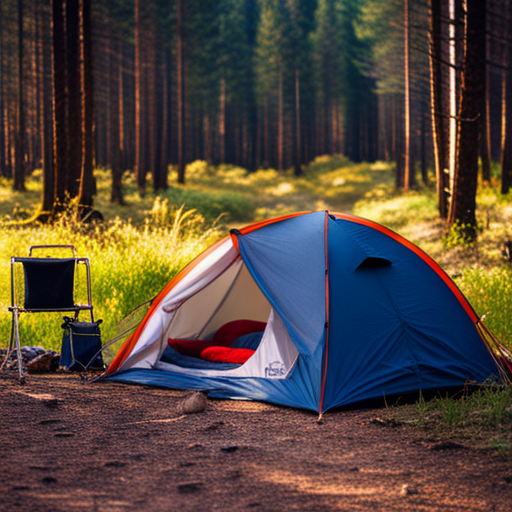If you’re looking to explore the U.S. and spend time on BLM land, there are several resources available to help you find just what you need. Here are some tips for finding BLM land that suits your needs:
1. Check online maps – Using an online map like Google Maps, you can search for BLM land in your area. Look for land that is managed or owned by the Bureau of Land Management, and zoom in to find more details about what type of recreational activities are available on each parcel.
2. Find out what kind of activities you can do – Different types of BLM land allow for different kinds of recreational activities. For example, some land may be open for hunting, while others allow camping and hiking. Make sure to double-check the regulations before you visit to ensure that you are following all safety protocols.
3. Look for land near popular attractions – If you’re looking for a place to camp or hike, try searching for BLM land close to popular attractions, such as national parks or monuments. Many of these areas have plenty of public land available for recreation and exploration.
4. Consult maps – The BLM provides detailed maps that show the boundaries of each parcel of land it manages. You can use these maps to find out exactly what type of land is available in your area, as well as the best ways to access it.
5. Consider other public land – In addition to BLM-managed land, there may be other types of public land available in your area. State parks, national forests, and wildlife refuges are all great places for camping, hiking, fishing, and more. Look into what’s available near you and how to access it.
6. Contact your local BLM office – If you have questions or need help finding the right spot, consider contacting your local Bureau of Land Management office. They can provide detailed information on what types of land are available in your area and how to access them.
7. Explore safely – BLM land, like any other public space, requires responsible use. Make sure to familiarize yourself with the rules and regulations of the area before venturing out so that you can enjoy your adventure safely. You may also need a permit or license if you plan on hunting or camping on BLM land, so make sure to look into that beforehand as well.
History of The Bureau of Land Management
The Bureau of Land Management (BLM) is a United States federal government agency responsible for managing public land, mineral resources, and natural resources. It was created by Congress in 1946 to oversee and manage the nation’s vast lands and resources.
The BLM is divided into ten geographic regions with headquarters located in Washington, D.C., and state offices located across the country. The mission of the BLM is to sustainably manage public lands for multiple uses such as energy production, recreation, grazing, timber harvesting, conservation, and habitat protection.
Since its inception in 1946, the BLM has been a leader in developing innovative ideas to ensure that America’s public lands are managed responsibly. By using modern technologies to properly monitor and manage public lands, the BLM protects these important resources while also allowing for their use in a variety of ways.
The BLM is committed to preserving America’s natural heritage by actively managing, protecting, and conserving wildlife habitat, wilderness areas, and recreational sites. In addition to its commitment to conservation, the BLM has also taken steps to ensure it meets its mission of providing economic stability through energy production and other job-creating activities.
Today, more than 250 million acres of public land are managed by the Bureau of Land Management. This includes national parks and monuments, forests and woodlands, grasslands and rangelands, watersheds and wetlands, oceans and coasts, wild horses and burros — all providing important natural resources for all citizens.
The BLM’s history dates back to the 1800s, when it was first created as part of the Department of the Interior in 1849. Initially, its primary purpose was to manage public lands and promote settlement across the western United States. In 1976, Congress passed the Federal Land Policy and Management Act (FLPMA), which established permanent protection for most public lands and set policy guidelines for their management by the BLM.
Today, the Bureau of Land Management’s mission is to sustainably manage its public lands on behalf of present and future generations. Its activities focus on energy development, wildlife conservation, grazing permits, timber harvesting, outdoor recreation opportunities, mineral development and archaeological sites. The bureau also works to restore and protect natural ecosystems, enhances public access to lands and waters, supports local economies, and creates opportunities for collaboration between government entities and the public.
The BLM is responsible for managing more than 245 million acres of land, as well as 700 million acres of subsurface minerals across the western United States. It also manages an additional 4 million acres of national forest system lands managed cooperatively by other agencies. The BLM’s responsibilities include: protecting cultural resources; managing endangered species; conserving water resources; protecting wilderness areas; managing grazing permits; regulating energy development; controlling wildfires; monitoring air quality; cleaning up hazardous waste sites; restoring damaged ecosystems; and providing recreation opportunities for Americans.
In order to accomplish its mission, the BLM works closely with other federal, state, and local agencies to ensure that land management decisions are made in an informed and collaborative manner. The BLM also relies on public input to help shape land management policy.


